Embarking on the ultimate 8-day Lemosho route to conquer Kilimanjaro is a thrilling challenge for the adventurous soul. This personalized trek guides climbers through diverse ecosystems, from lush rainforests to arid moorlands, as they ascend at their own pace. With a well-structured itinerary, including the demanding Lava Tower and the final push to Uhuru Peak, trekkers can revel in the stunning vistas and the sense of accomplishment that comes with reaching the highest point in Africa. Yet, the journey is not without its obstacles, as navigating the complexities of altitude sickness and ensuring proper preparation are crucial to a successful climb.
Good To Know
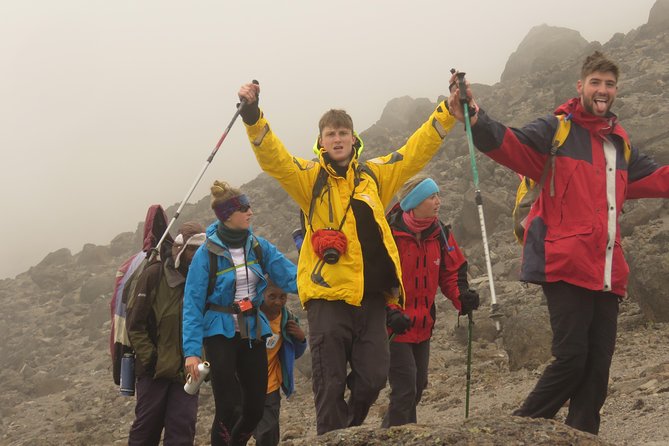
- The Lemosho Route is an 8-day private trek on Kilimanjaro, Africa’s highest peak, with a 100% recommendation from 27 reviews.
- Proper physical fitness, gear, and acclimatization are crucial to prevent altitude sickness and ensure a successful climb.
- The trek covers diverse landscapes, including lush rainforests, heathland, moorland, and alpine desert, leading to the summit at 19,341 feet.
- Highlights of the Lemosho Route include the Shira Plateau, Barranco Wall, and Lava Tower, offering stunning views and challenging terrain.
- Experienced mountain guides are essential to adjust the pace and route as needed to accommodate individual fitness levels and prevent altitude sickness.
Overview of the Lemosho Route

The Lemosho route is an 8-day trek on Kilimanjaro, Africa’s highest peak.
It’s a private package that allows for a personalized pace. This route boasts a 100% recommendation from 27 reviews and a badge of excellence.
Trekkers can expect all meals, camping equipment, transportation, park fees, and tips for the mountain crew to be included.
The experience starts and ends at the Africa Natural Tours Ltd office in Moshi, Tanzania.
While not wheelchair accessible, the trek is suitable for moderately fit travelers without serious medical conditions.
Confirmation is received at booking, with a max of 90 travelers per tour and a lowest price guarantee starting from $1,530.
You can also read our reviews of more tours and experiences in Moshi.
Preparing for the Kilimanjaro Trek
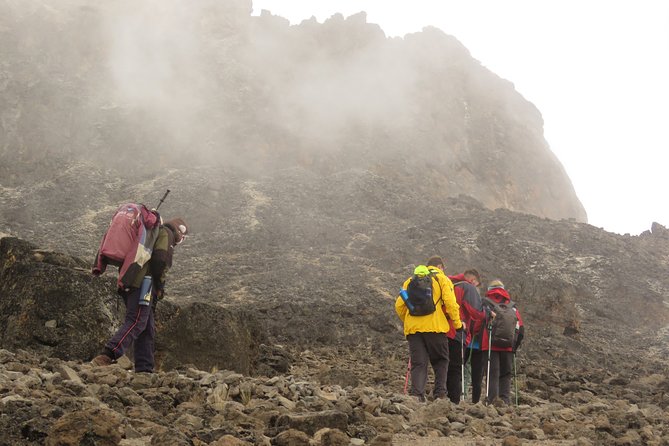
Preparing for the Kilimanjaro trek involves several key considerations to ensure a successful and safe climb.
First, physical fitness is crucial, as the trek requires moderate to high endurance. Climbers should train for several months beforehand, focusing on cardiovascular exercises and strength training.
Proper gear, including warm layers, waterproof boots, and a quality backpack, is essential to withstand the varying temperatures and weather conditions.
Acclimatization is also vital, as the high altitude can cause altitude sickness. Climbers should arrive a few days early and gradually ascend to allow their bodies to adjust.
Packing List for the Climb
Packing the right gear for the Kilimanjaro trek is paramount to a successful and comfortable climb. The Lemosho route requires a comprehensive packing list to handle the diverse weather conditions and terrain.
Climbers should pack warm layers, including thermal underwear, fleece jackets, and insulated pants. Waterproof outerwear, such as rain jackets and pants, is essential. Sturdy, broken-in hiking boots with good traction are a must, along with gaiters to keep debris out.
Other important items include a warm sleeping bag, a headlamp, sun protection, and personal hygiene supplies. Trekkers should also pack snacks, electrolyte supplements, and a water bottle or hydration system.
With the right gear, climbers can focus on the exhilarating journey to the roof of Africa.
Acclimatization and Altitude Sickness
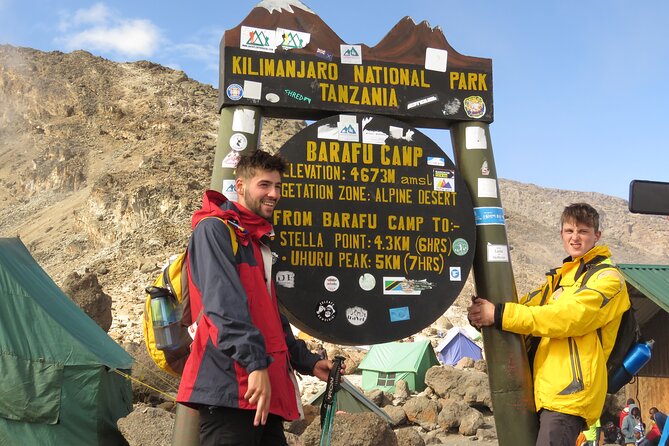
Scaling Kilimanjaro’s Lemosho route requires meticulous acclimatization to prevent the debilitating effects of altitude sickness. Your body needs time to adjust to the progressively thinner air, and the itinerary’s gradual ascent helps maximize the chances of reaching the summit.
Drink plenty of water, move at a slow pace, and listen to your body for signs of altitude sickness, like headaches, nausea, or dizziness. If symptoms appear, descend immediately.
The guides are trained to monitor your health and will adjust the pace or route if needed. Proper acclimatization is crucial for a successful and safe Kilimanjaro adventure.
Day-by-Day Itinerary of the Trek
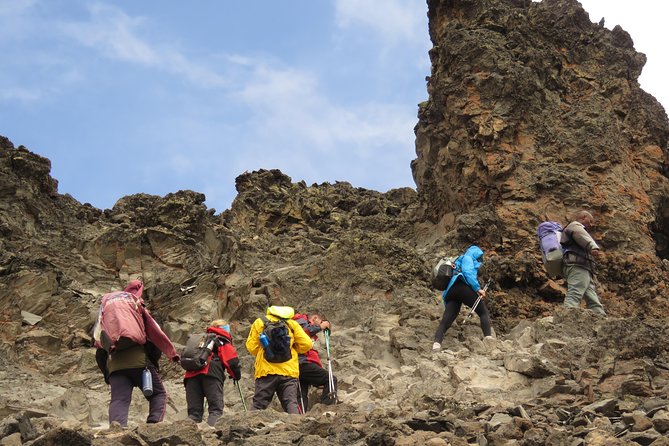
The eight-day Lemosho route ascends Kilimanjaro through a variety of diverse landscapes.
On day one, hikers begin at the Lemosho Glades and trek through montane forests.
Days two and three involve climbing through heathland and moorland.
Day four reaches the Lava Tower, a challenging but scenic portion.
Days five and six climb steadily through alpine desert, ultimately reaching Barafu Camp at over 15,000 feet.
The final summit push on day seven climbs to Uhuru Peak, the highest point in Africa at 19,341 feet.
The descent on day eight is via the Mweka Route, passing through thick alpine forests.
Each day’s trek is supported by experienced guides and porters, ensuring a safe and memorable journey to the roof of Africa.
Highlights of the Lemosho Route
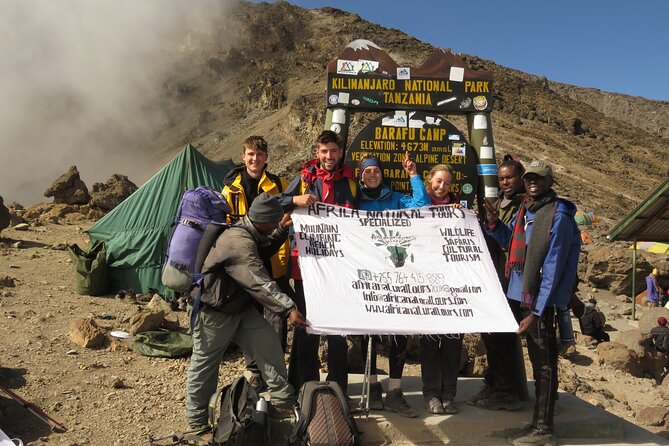
The Lemosho route boasts an array of captivating scenery and diverse landscapes that make the journey to the summit of Kilimanjaro truly unforgettable. Trekkers traverse lush rainforests, arid moorlands, and otherworldly alpine deserts, each offering a distinct visual experience.
The route’s highlights include:
- The Shira Plateau, a vast, high-altitude expanse with stunning views of the mountain’s western face.
- The Barranco Wall, a challenging but rewarding scramble that grants access to the Karanga Valley.
- The Lava Tower, a striking geological formation marking the transition to the upper reaches of the mountain.
These varied landscapes, combined with the sense of accomplishment from reaching the roof of Africa, make the Lemosho route an unforgettable adventure.
Tips for a Successful Climb
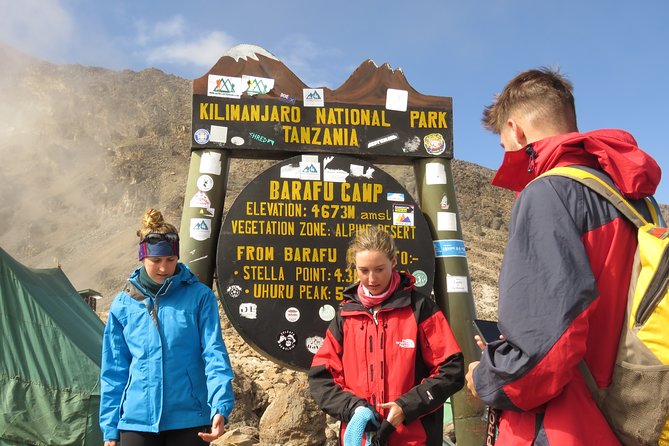
To ensure a successful climb up Kilimanjaro’s Lemosho route, one must prepare thoroughly. Proper pacing, hydration, and layering are essential. Plus, following health and safety guidelines is paramount. The table below outlines key tips for conquering this iconic peak:
| Tip | Description |
|---|---|
| Acclimatize | Gradually increase altitude to allow body to adapt |
| Pack Wisely | Bring essential gear, but avoid overpacking |
| Stay Hydrated | Drink plenty of water throughout the trek |
| Pace Yourself | Slow and steady progress reduces risk of altitude sickness |
| Listen to Guides | Trust the expertise of experienced mountain crew |
Frequently Asked Questions
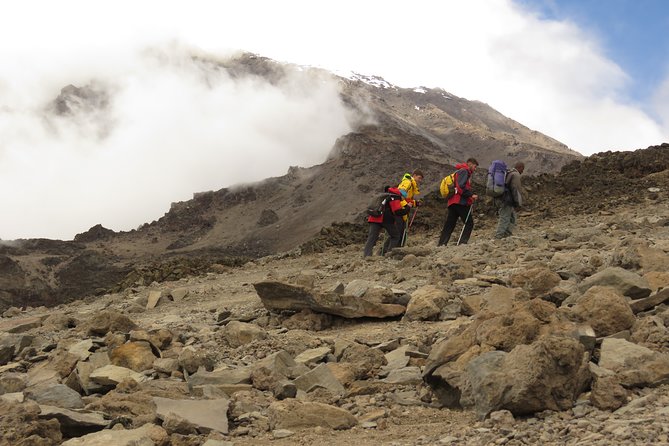
Amidst the excitement of tackling the Lemosho Route on Kilimanjaro, climbers often have a range of questions.
What’s the best time of year to go? How difficult is the trek? What gear is required? These are just a few of the common inquiries.
To address them:
-
The Lemosho Route is typically best attempted between June and October when weather conditions are more favorable.
-
While challenging, the Lemosho is considered a moderate route suitable for fit hikers with some previous experience.
-
Proper cold-weather gear, including insulated jackets, pants, gloves, and sturdy boots, is essential for the changeable conditions on the mountain.
Frequently Asked Questions
What Is the Success Rate for Completing the Lemosho Route?
The success rate for completing the Lemosho route to climb Kilimanjaro is high, with 100% of reviewers recommending the private package tour. Experienced guides and proper gear ensure a successful summit for most trekkers.
Can Solo Travelers Join This Group Tour?
Solo travelers can join this group tour, as the package allows for a personalized pace. The group size is limited to a maximum of 90 travelers, ensuring a more intimate experience on the mountain.
Can the Tour Be Customized for Specific Dates or Group Size?
The tour can be customized for specific dates and group size. The private package allows for a personalized pace, and the maximum group size is 90 travelers, offering flexibility for solo travelers or small groups.
What Happens in Case of Unexpected Weather Delays or Emergencies?
In case of unexpected weather delays or emergencies, the tour operator will adjust the itinerary and provide necessary assistance, including medical support and evacuation if required, to ensure the safety and well-being of the travelers.
Are There Any Restrictions on the Amount of Luggage Allowed?
There are no specific restrictions on the amount of luggage allowed, but travelers are advised to pack only essential items as porters will carry the bags. Excess luggage may incur additional fees.
The Sum Up
The Lemosho Route‘s 8-day trek up Kilimanjaro offers a thrilling adventure through diverse landscapes. With a personalized pace and well-structured itinerary, climbers can maximize their chances of reaching the summit while minimizing altitude sickness risks. The stunning views and sense of accomplishment make this route an unforgettable experience for outdoor enthusiasts seeking to conquer Africa’s highest peak.
More Tour Reviews in Moshi
Not for you? Here's more nearby things to do in Moshi we have reviewed
- Day Trip To Tarangire National Park
- Mountain Kilimanjaro Climbing 6 Days Machame Route
- 6 Days Rongai Route Climbing Mt.Kilimanjaro
- 7-Day Kilimanjaro Climb Machame Route
- 7-Days Tour Mount Kilimanjaro Trekking via Machame Route
- Kilimanjaro: Lemosho Route and Camping Safari
- 8 Days 7 Nights Private Lodge Safari
- 5 Days Comfort Safari in Tanzania
- 2 Days Lodge Safari.
- One Day Tanzania Safari – Tarangire or Arusha National Park
- Day Trip Lake Manyara
- Mt.kilimanjaro-machame Route
